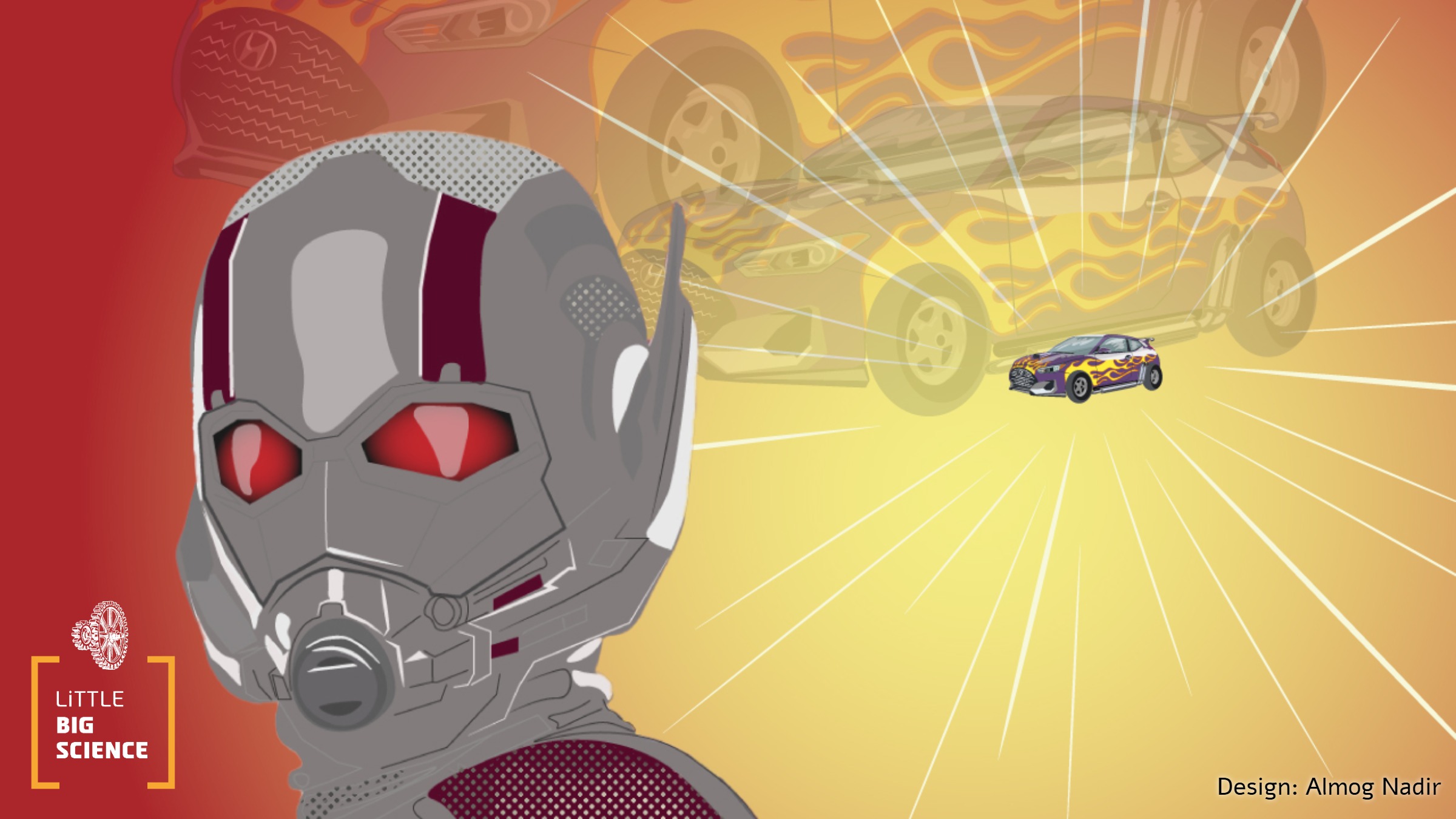
The Ant-Man films are based on the ability to shrink and enlarge objects, but the technology and science shown in the movie are not realistic. We’ll describe the obstacles to shrinking a car to a tiny size, explain the connection to Formula 1 cars, and how Reynolds number fits into all of this.
Advertisement
In the Ant-Man movies, Scott Lang and others shrink and enlarge themselves or objects in their surroundings by using Pym Particles—fictional subatomic particles [1] capable of affecting the space between atoms and thereby allowing objects to change size. The idea of shrinking and enlarging objects is not new; it has already appeared in books (see Alice in Wonderland), movies (remember the masterpiece “Honey, I Shrunk the Kids”?) and many more. Ant-Man is unique in that it combines size manipulation with the superhero genre.
Although the science behind the movie is not accurate, it provides a fun and exciting way to engage with complex scientific concepts and ideas, and serves as a reminder that science fiction can be a powerful tool for scientific and technological inspiration and education. The film presents a variety of scientific ideas, such as extreme size change, ant control and a clumsy thief who becomes an Avenger, but we will focus specifically on the tiny cars whose rapid driving and frequent size changes yield spectacular action scenes (for a deeper dive into the effect of shape change on density and mass, read about Thor’s hammer [2] and the “square-cube law” [3]).
So what is actually wrong with the tiny cars? Watch, for example, the chase scene in “Ant-Man and the Wasp”:
In this scene a miniature car (Hot Wheels) grows to the size of a regular car, then shrinks again, all while driving at normal-car speed. In addition to road hazards that are not adapted to the size of a tiny vehicle (e.g., a small pebble would be a giant wall; a slight pothole would be a trench), the car will encounter complex engineering problems:
Because the car’s wheels are tiny, meaning they have a very small circumference, they must spin faster to cover the same distance in the same time. Why? If, for example, the diameter of the tiny wheels is 1 % that of regular wheels, then to maintain identical distance and time the tiny wheels would have to rotate at 100 times the RPM of regular wheels. And because the centrifugal force on the wheel increases linearly with the wheel’s radius but increases quadratically with rotational speed, the rotational loads on the tiny wheel would be 100 times greater! Such a high rotational speed in a tire not designed for it would lead to many problems that would hamper our miniature Avenger: rubber tearing, fractures due to overload, increased wear on the wheel axle and more. Maybe it would work for a very short time, but not as shown in the movie.
Scientific accuracy: 1/10
Let’s move on to mass. Shrinking the car will not reduce its mass, because the gaps between atoms are mass-less (so “eliminating” them is meaningless). But hey, it’s Hollywood! And we really want to be able to carry a car or a tank in our pocket:
On the other hand, even if we assume that changing the vehicle’s size changes its mass, the light weight of the miniature car—relative to its speed—will yield low road grip to the point that the car could lift off when it meets a mild ramp (as happened to Peter Dumbreck [4]). That is why race cars, especially Formula 1, look the way they do: to allow them to drive—and especially to corner—at such high speeds, their downward lift must be increased [5]. The car’s design therefore includes a relatively low center of gravity and the addition of many aerodynamic elements such as front and rear wings, a splitter and more.
Scientific accuracy: 0/10
Now a bit of aerodynamics: because of their small size, the relative drag force—the force acting opposite the direction of travel and slowing down the car—will be greater in miniature cars than in regular cars. This is because the car’s surface area decreases with the square of its size, whereas its mass decreases with the cube (the square-cube law [3]); therefore drag relative to mass increases by a factor of 100! A tiny car therefore cannot travel at such speeds unless the engine power compensates significantly.
The drag coefficient will also increase thanks to the Reynolds number [6], a dimensionless quantity [7] expressing the ratio of inertial forces to viscosity forces (low viscosity: air; high viscosity: honey) for a given fluid (such as air or water). The smaller the car, the smaller the Reynolds number. This quantity has many implications, and in our case: the smaller the Reynolds number, the greater the influence of viscosity. In other words, the car will “feel” as though it is moving through viscous air—through something that resists its motion—more than a larger car would, thereby further increasing the relative drag (because the drag coefficient rises). In addition to the effect on drag, there will also be an effect on the relative downward lift, i.e., the car’s grip on the road, which will greatly increase the risk of loss of control or rollover.
Scientific accuracy: 0/10
Even if our heroes manage to overcome all these issues, the power and control mechanisms used to drive miniature cars must be adapted: the engine, brakes and steering from regular vehicles are not suitable for use in tiny cars. This is in addition to questions such as the amount of fuel required and the engine power that would have to increase, etc.
Scientific accuracy: 1/10
The movie presents a nice imaginary physical principle that might solve many engineering problems. Yet the day when Pym Particles will solve quantum-computing problems or influence car racing at either regular or miniature size is far. But hey, at least we won’t have a bunch of ants on the countertop! And maybe we’ll write sometime about other burning issues that appear in the film, like ant behavior and how to control them. Who knows.
Hebrew editing: Haggai Gelernter
English editing: Elee Shimshoni
References:
[1] Pym Particles
[2] Thor’s hammer
[3] The square-cube law, or the cubed square
[4] A race car becoming airborne due to low road grip
[5] Lift
[6] Reynolds number
[7] Dimensionless









